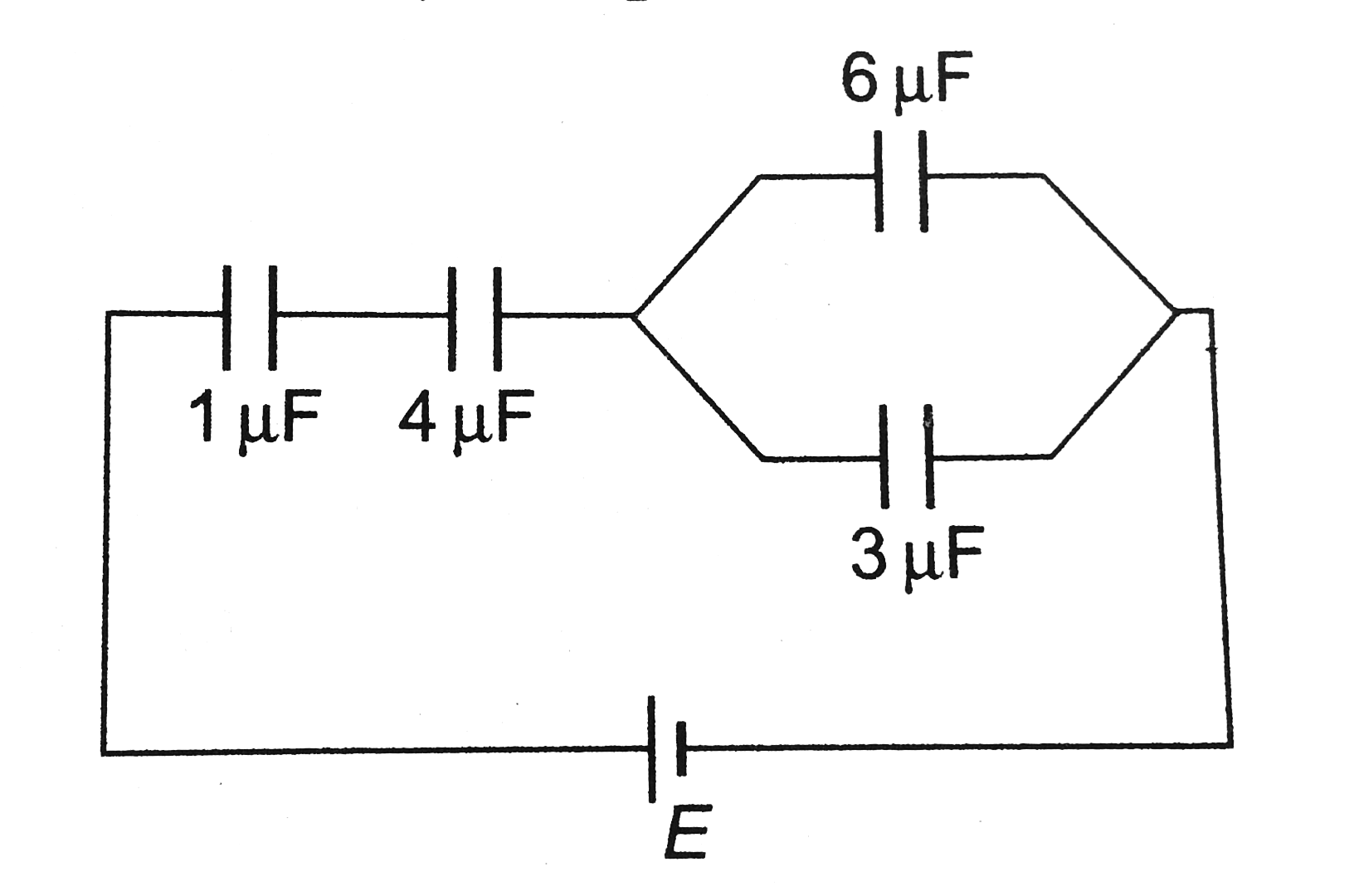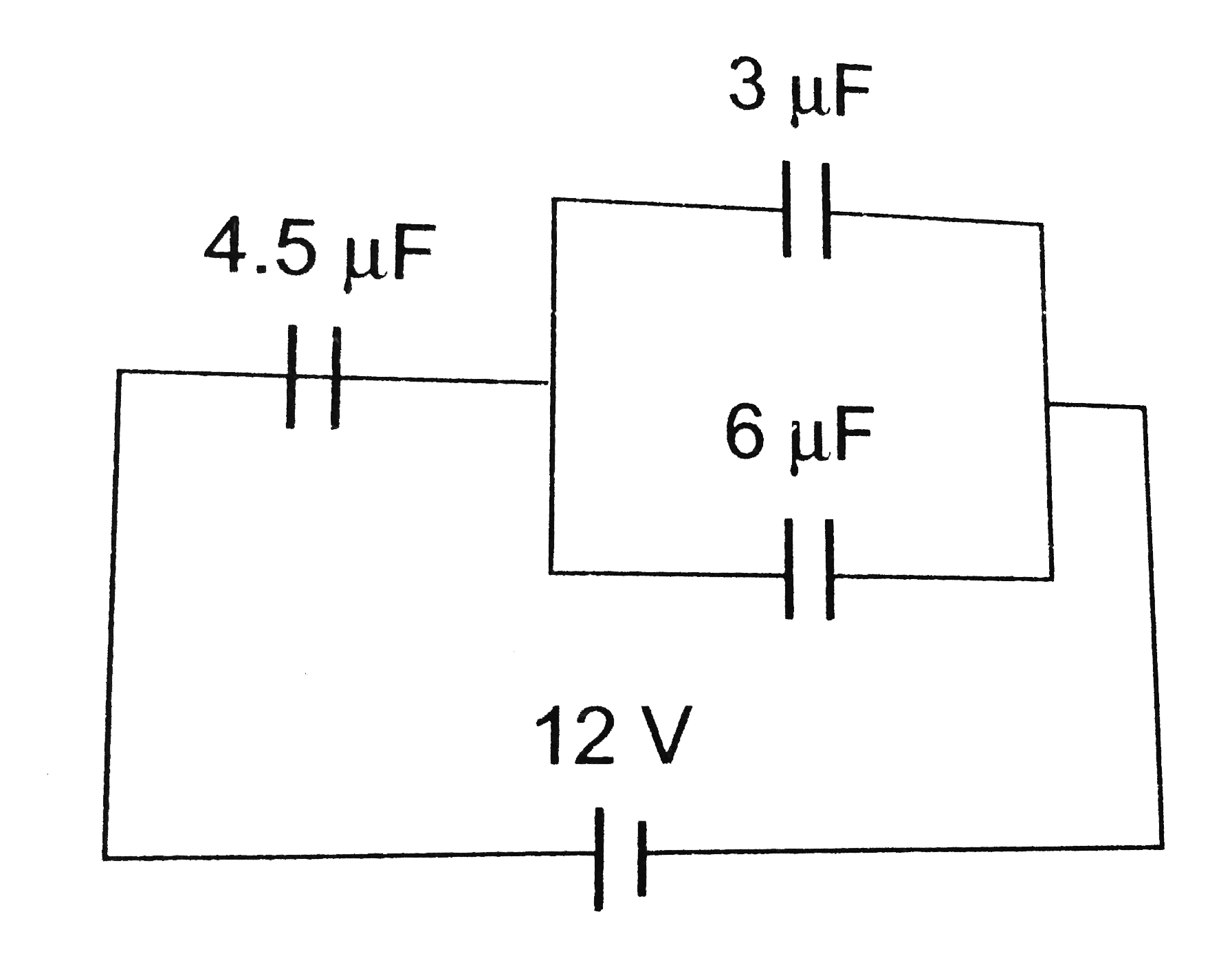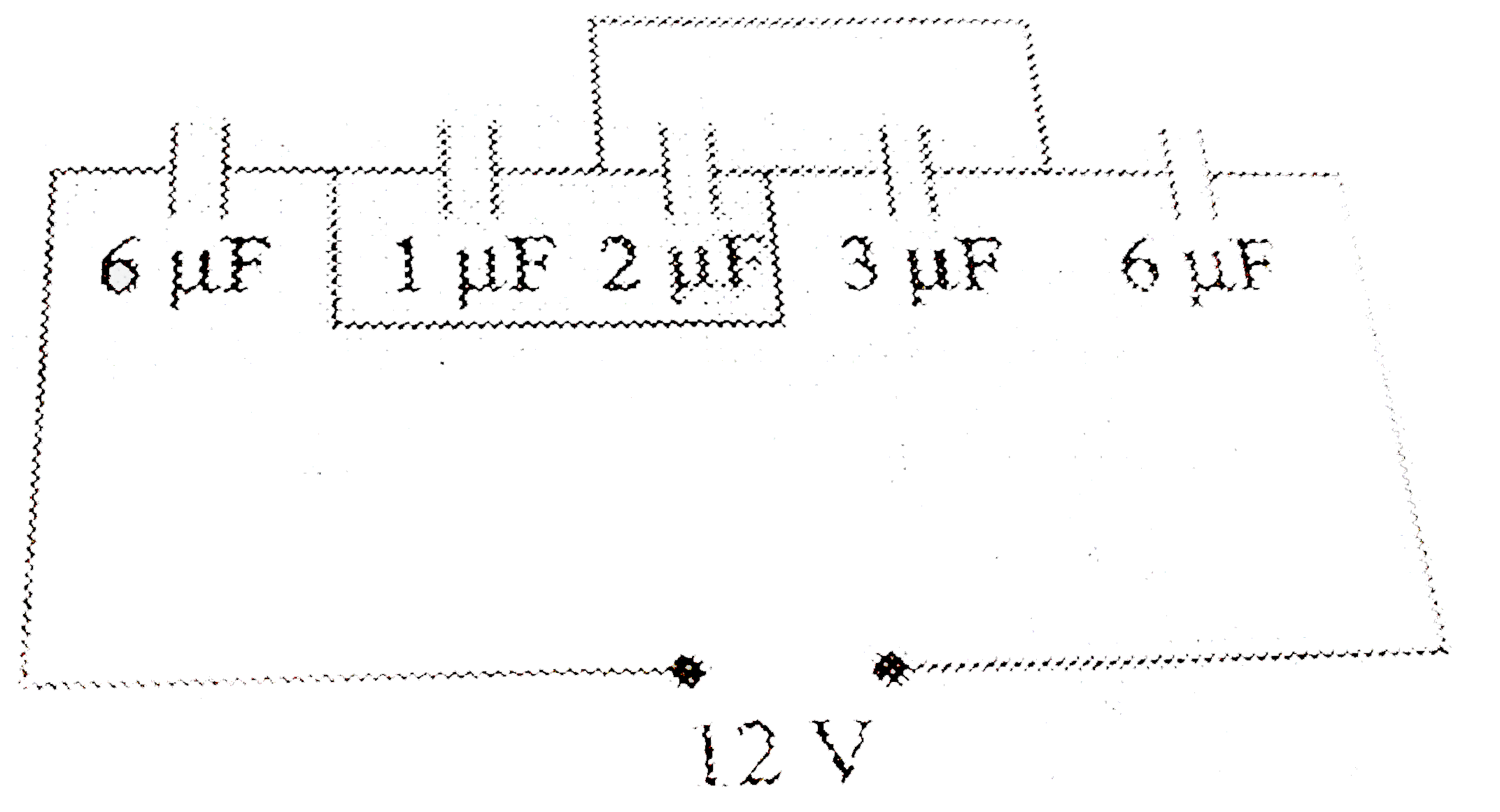A 10μF capacitor and a 20μF capacitor are connected in series across a 200V supply line. The chraged capacitors are then disconnected from the line and reconnected with their positive plates together and negative plates together and no external voltage is applied. what is the potential difference across each capacitor ?
4009V
8009V
400 V
200 V
The correct Answer is:A
To solve the problem step by step, we will follow these calculations:
Step 1: Calculate the Equivalent Capacitance
When capacitors are connected in series, the equivalent capacitance Ceq can be calculated using the formula:
1Ceq=1C1+1C2
where C1=10μF and C2=20μF.
Substituting the values:
1Ceq=110+120
1Ceq=2+120=320
Thus,
Ceq=203μF
Step 2: Calculate the Charge on the Capacitors
The charge Q stored in the capacitors when connected to a voltage V=200V is given by:
Q=Ceq×V
Substituting the values:
Q=(203μF)×200V=40003μC
Step 3: Reconnect the Capacitors
After disconnecting from the voltage source, the capacitors are reconnected with their positive plates together and negative plates together. In this configuration, the total charge remains the same, and the capacitors are now in parallel.
Step 4: Calculate the Total Charge
Since both capacitors have the same charge Q when they were in series, we can say:
Q1=Q2=40003μC
Thus, the total charge Qtotal when connected in parallel is:
Qtotal=Q1+Q2=40003+40003=80003μC
Step 5: Calculate the New Equivalent Capacitance
When connected in parallel, the equivalent capacitance C′eq is the sum of the individual capacitances:
C′eq=C1+C2=10μF+20μF=30μF
Step 6: Calculate the Potential Difference Across Each Capacitor
The potential difference V across the capacitors can be calculated using:
V=QtotalC′eq
Substituting the values:
V=80003μC30μF=800090V=8009V
Final Result
Thus, the potential difference across each capacitor when they are reconnected is:
V≈88.89V
When capacitors are connected in series, the equivalent capacitance Ceq can be calculated using the formula:
1Ceq=1C1+1C2
where C1=10μF and C2=20μF.
1Ceq=110+120
1Ceq=2+120=320
Thus,
Ceq=203μF
The charge Q stored in the capacitors when connected to a voltage V=200V is given by:
Q=Ceq×V
Substituting the values:
Q=(203μF)×200V=40003μC
After disconnecting from the voltage source, the capacitors are reconnected with their positive plates together and negative plates together. In this configuration, the total charge remains the same, and the capacitors are now in parallel.
Since both capacitors have the same charge Q when they were in series, we can say:
Q1=Q2=40003μC
Thus, the total charge Qtotal when connected in parallel is:
Qtotal=Q1+Q2=40003+40003=80003μC
When connected in parallel, the equivalent capacitance C′eq is the sum of the individual capacitances:
C′eq=C1+C2=10μF+20μF=30μF
The potential difference V across the capacitors can be calculated using:
V=QtotalC′eq
Substituting the values:
V=80003μC30μF=800090V=8009V
Thus, the potential difference across each capacitor when they are reconnected is:
V≈88.89V
Similar Questions
In the adjoning figure, the potential difference across the 4.5μF capacitor is

View Solutiongiven that potential differene across 1μF capacitor is 10V. Then,

View SolutionWhat is the potential difference across 2μF capacitor in the circuit shown?

View SolutionIn the circuit shown in the figure, the potential difference across the 4.5μF capacitor is

View SolutionThe potential drop across 7μF capacitor is 6V. Then

View SolutionA 1μF capacitor and a 2µF capacitor are connected in series across a 1200V supply line.
a. Find the charge on each capacitor and the voltage across them.
b. The charged capacitors are disconnected from the line and from each other and reconnected with terminals of like sign together. Find the final charge on each and the voltage across them.
View SolutionTwo capacitors of 10μF and 20μF are connected in series with a 30V battery. The charge on the capacitors will be, respectively
View SolutionIn the given circuit, the potential difference across the 6μF capacitor in steady state is

View SolutionA 4.00μF capacitor and a 6.00μF capacitor are connected in parallel across a 660V supply line
(a) Find the charge on each capacitor and the voltage across each.
(b) The charged capacitors are disconnected from the line and from each other, and reconnected to each other with terminals of unlike sign together. Find the final charge on each and the voltage across each.
View SolutionFigure shows five capacitors connected across a 12V power supply. What is the charge on the 2μF capacitor ?

View Solution
